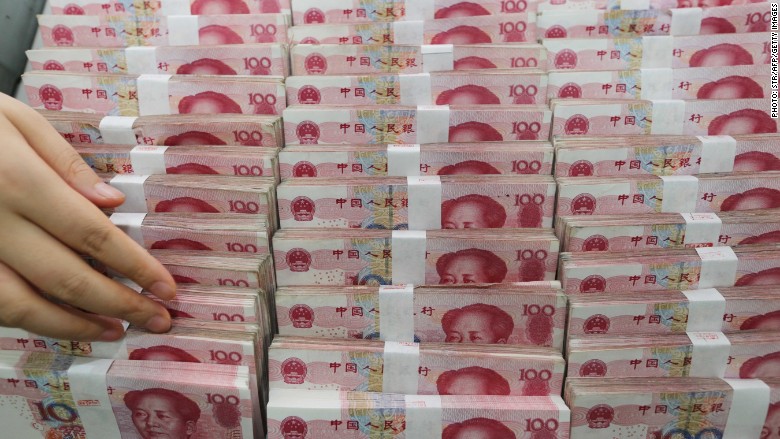China’s Yuan tumbles
June 25, 2018 | Expert Insights

China's yuan fell to a 5-1/2-month low against the US dollar on June 25th, 2018. The development occurred a day after the nation’s central bank announced that it would cut the amount of cash that some banks must keep in reserves.
Background
China is the second largest economy in the world after USA. According to certain forecasts, its GDP growth is slated to overtake America’s GDP in another 10 years. A hub for the manufacturing industry, China is the fastest growing economy. Its economic growth has been over 10% for over 30 years.
However, in the recent years, China’s exponential growth has come at the cost of increased debt. According to statistics, its debt is more than 250% of the GDP and is much higher than the US. It is, however, lower than Japan, which remains the world’s most indebted leading economy. Experts have said that if China’s trajectory continues, then it will be looking at an economic slump sooner than later. China’s exporting prowess has fuelled massive trade surpluses and tensions with the US.
The International Monetary Fund endorsed China's Yuan as a reserve currency two years ago -- putting it in an elite club that includes the US Dollar and the British Pound. The GDP growth rate in China was 6.7% for 2016.
According to the Chinese government, due to a rise in exports, construction, and consumer spending, the economic growth rate for 2017 was 6.9%. This beat industry expectations as well as projected estimates. This is also the first time in seven years the speed of China's economic growth went up rather than edging down. The figure also beat Beijing's official annual expansion target of about 6.5%.
The People's Bank of China is the central bank of the China, which has the power to carry out monetary policy and regulate financial institutions in mainland China. Since July 2017, the People's Bank of China is known to have the largest financial asset holdings of any central bank in the world.
Analysis
China’s Yuan has fallen for the eighth straight session and this is now officially the longest losing streak the nation has witnessed in two years. According to experts, the fall is largely due to the worsening trade ties between US and China.
The People's Bank of China (PBOC) said that it would be cutting the amount of cash that some banks must keep in reserves by 50 basis points (bps), releasing $108 billion in liquidity, to accelerate the pace of debt-for-equity swaps and spur lending to smaller firms. "With no trade war relief in sight, selling yuan on prospects of a more aggressive PBOC policy shift could be a path of least resistance," the bank noted.
In recent months, experts have begun sounding alarm about an impending trade war between the US and China, the two largest economies in the world. These fears heightened in March, when President Trump announced global import tariffs of 25% on steel and 10% on aluminium. The president cited “national security” in order to circumvent WTO commitments. Since then, tensions have escalated. The US has imposed tariffs worth over $150 billion; Beijing responded with $50 billion worth of tariffs.
In June 2018, Beijing announced retaliatory measures after the US imposed fresh tariffs on Chinese technology products. Beijing announced tariffs on a $34 billion list of American goods. These measures could trigger a larger trade war.
Stephen Innes, head of trading, Asia-Pacific, at Oanda, noted, “Although the PBOC’s cut of the reserve requirement ratio does not have direct policy implications, it did suggest some concern about the economy and the trade war. We could see the PBOC take significant policy measures such as lowering interest rates as local equity markets continue to struggle,” Innes said. “With the US interest rates on the rise and a possible dovish shift from the PBOC, I am looking for offshore yuan to trade against the US dollar down to 6.55-level in the near-term,” Innes added.
The PBOC set the midpoint lower by 98 basis points, or 0.15 per cent, at 6.4804 per US dollar. “During this period of escalating protectionism and rising investment tension between China and the US, the market usually reacts to bad news by causing the US dollar to appreciate against other major currencies. This will also tend to weaken the yuan against the dollar,” said Iris Pang, economist for Greater China at ING.
Assessment
Our assessment is that the tense ties between China and the US are now having a direct effect on the Chinese economy and its currency. According to analysts, the tariffs imposed by the US would result in higher costs for consumers. If there is a full-blown trade war between the two largest economies in the world, that could trigger yet another financial crisis, globally.








Comments